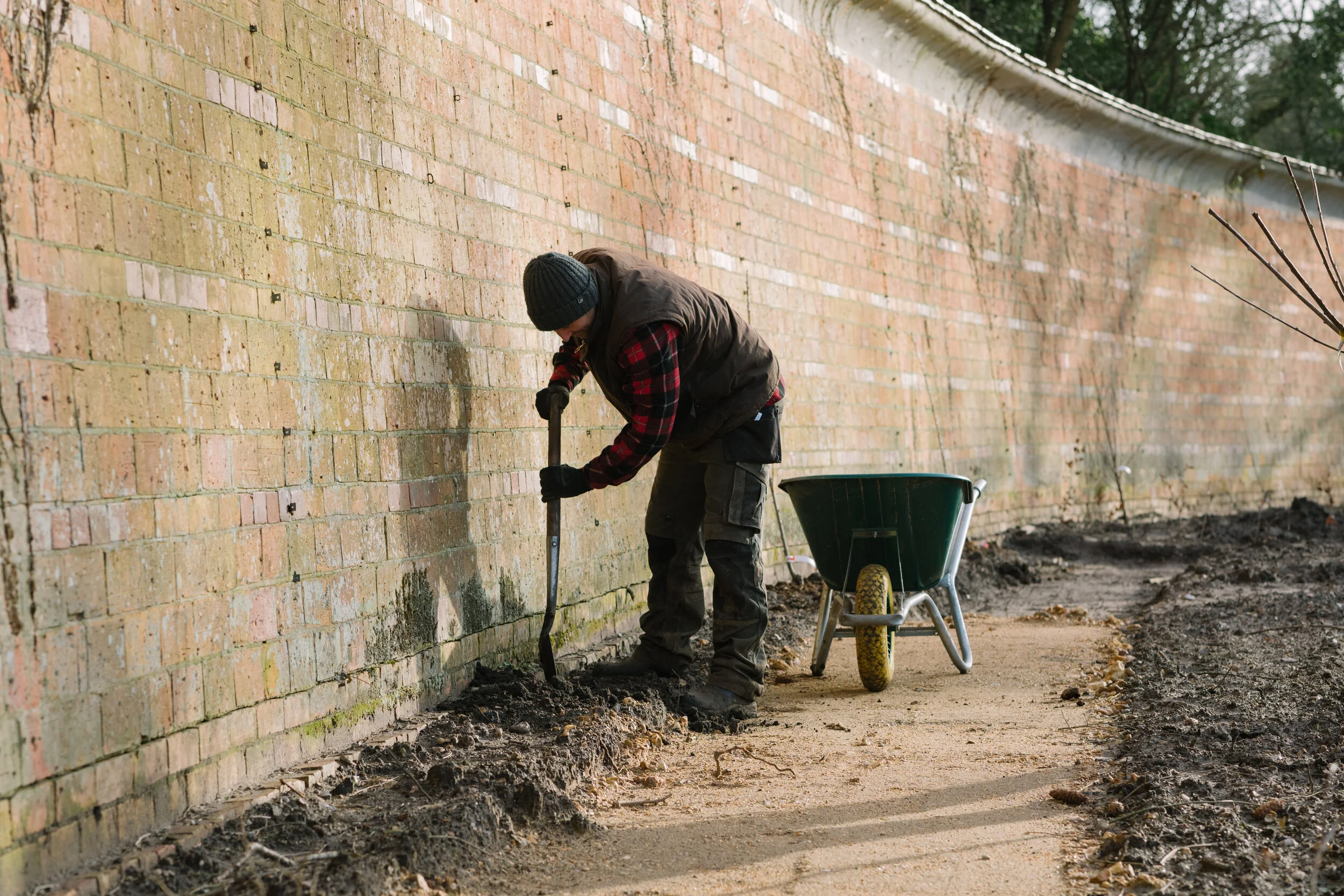Can walls build bridges?
In the age of division, with so many people requiring you to be either in or out what if there was another way? What, if instead of deciding between building walls or building bridges, there was a way that both could be ok?
2019 was meant to feel like the future; electric cars, high speed internet, 3D printing – all hallmarks of a rapidly advancing society that regularly puts humans in space and has conquered the known world. But somehow, instead the air tastes of bitter disappointment, of faded glories and dilapidated ideals.
Some have chosen to turn back and wind the clock back to a time when men were men, and the world was in order. This clashes, sometimes violently, with a new dream, of equitable standards, a healthy environment and of simply owning any kind of future.
Amongst all this disquiet something strange came recently into my possession; a 3.5 acre walled garden in a quiet corner of Dorset. Decrepit. Gates chained shut. Rusted locks and broken bricks.
For the first few weeks, I would creep down to the entrance and peer through the slats of the gates. The grass already a foot high in early spring. Eventually, I lifted the latch and went in. Almost immediately I disturbed several deer who I later realised had been using the space as a nursery for their young. As I continued on, stumbling over hidden ant hills the size of a mega-city, I found the fresh kills from buzzards who were now circling over head. Ravens and crows squawked from the tree line as I pushed deeper into the heart of the garden.
The walls were covered with ivy, laurel overhung from the outside and a once grand arched gateway had been partially eaten away by that rambling ivy. The wrought iron gate was eroded by rust. An old potting shed, grand yet humble too, looked like a Chelsea pensioner in his bright red tunic. Toothless, with no windows or a roof but still an air of dignity and faded glory.
A tall oak towers from the opposite side of the gateway, its boughs reaching outwards and its trunk suggesting it must be 2-300 years old, maybe even growing here before the walls themselves were built. Behind it is hidden a ramshackle dairy, the size of a two bedroom cottage; the path down blocked by the roots stumps of old trees long since collapsed. Inside is a dead fox and on the second floor an old red tent and empty bottle of cider sit in the dank darkness.
Even now no one has opened the tent for fear of a dead body… or worse.
There are three brilliant red brick walls that encase the 3.5 acres and the final boundary wall is a park-style iron fence. It’s been here so long you can see the war wounds where trees grew around it and then fell, bringing sections down like mangled scrap. Defunct power lines are hanging onto rotten telegraph poles above as vines and trees tangle their branches through them. I’m making it sound a mess and it is, but it’s a charming mess.
A soft quiet falls over you each time you enter this charmed space. A mist of potential drifts across the grasses and I find myself returning more and more, craving the peace it exudes. Elsewhere, my life is not in that peaceful state; work feels embattled and increasingly tense and so, this garden offers a different future, to me and I think maybe to more.
I have the deep sense that there is greater value to this space other than just some kindly assorted brick and metal work. The longer I stay the more I realise that as we all pull in different directions, some wanting the comfort of the past and others wanting the assurance of a future, then maybe this space, no matter its size, can hold a tiny piece of the solution. Can a walled garden offer not only the physical space to protect and to grow plants, but a place where innovative ideas take root too?
Can art and culture weave song, dance and the written word through the branches? Can people find space to grow, to cultivate their inner world to be strong enough for the wider world? Can we connect to the best aspects of our past but relinquish the ugly foundations some of those ideals were built on? Can we address the present ecological and social crises and, through a sense of belonging, build healthy futures together? Can these walls that have been built actually allow us to grow, to connect with one another? I’m not sure how but the inspiration is there to create something a bit different.
Of course, I’ve left out that I’m a perfumer; I deal in the distilled essence of plant life that can communicate directly with the most primal of human senses. Smell. Taking the diverse elements of the plant world and re-stacking them, finding ways of enhancing the best elements and reducing the worst, that’s been my job for 18 years. The creative challenge of applying this to a living place - the opportunity to take those diverse living elements and play with them in a garden, both people and plants, to see how they can dance together is going to be a challenge but one that I can’t help but relish the opportunity of having been given.
But for now, this is a work in progress in every sense. The opportunity to renew the old and dream of the future. A place whose walls could help to build bridges. To keep up to date with progress here please follow this blog and social media channels. Who knows what will come next … but I promise it will be interesting, exciting or at the very least a bit weird.

